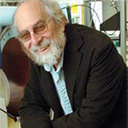Hyperoxia and transforming growth factor β1 signaling in the post-ischemic mouse heart.
Parole chiave
Astratto
OBJECTIVE
Following ischemic injury, myocardial healing and remodeling occur with characteristic myofibroblast trans-differentiation and scar formation. The current study tests the hypothesis that hyperoxia and nitric oxide (NO) regulate TGF-β1 signaling in the post-ischemic myocardium.
METHODS
C57BL/6 wild-type (WT), endothelial and inducible nitric oxide synthase knockout (eNOS(-/-) and iNOS(-/-)) mice were subjected to 30-min left anterior descending coronary artery occlusion followed by reperfusion. Myocardial tissue oxygenation was monitored with electron paramagnetic resonance oximetry. Protein expressions of TGF-β1, receptor-activated small mothers against decapentaplegic homolog (Smad), p21 and α-smooth muscle actin (α-SMA) were measured with enzyme-linked immunosorbent assay (ELISA), Western immunoblotting, and immunohistochemical staining.
RESULTS
There was a hyperoxic state in the post-ischemic myocardial tissue. Protein expressions of total and active TGF-β1, p-Smad2/3 over t-Smad2/3 ratio, p21, and α-SMA were significantly increased in WT mice compared to Sham control. Knockout of eNOS or iNOS further increased protein expression of these signals. The expression of α-SMA was more abundant in the infarct of eNOS(-/-) and iNOS(-/-) mice than WT mice. A protein band indicating nitration of TGF-β type-II receptor (TGFβRII) was observed from WT heart. Carbogen (95% O2 plus 5% CO2) treatment increased the ratio of p-Smad2/t-Smad2, which was inhibited by 10006329 EUK (EUK134) and sodium nitroprusside (SNP). In conclusion, hyperoxia up-regulated and NO/ONOO(-) inhibited cardiac TGF-β1 signaling and myofibroblast trans-differentiation.
CONCLUSIONS
These findings may provide new insights in myocardial infarct healing and repair.



